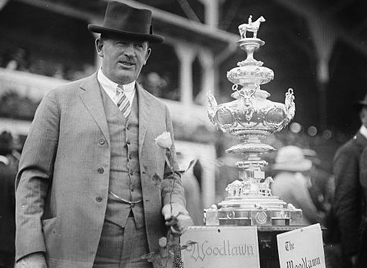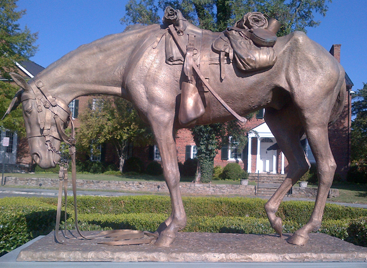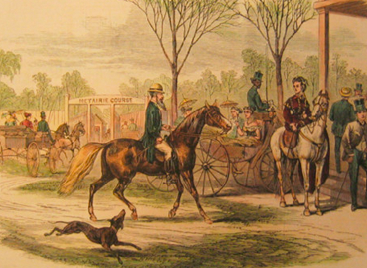The Woodlawn Vase

The Woodlawn Vase, Robert Aitcheson Alexander’s homage to Lexington and Woodburn Farm, has woven its own historical thread into racing’s grand tapestry. After the Civil War, the Vase went back into service as a trophy for winners of the Woodlawn Stakes at the Woodlawn Association Course in Louisville. When Churchill Downs succeeded the Woodlawn Course, the Louisville Jockey Club took possession of the Vase. They added the Vase as the prize for the Great American Stallion Stakes. In 1884 and ‘85, the Dwyer Brothers—Phil and Mike–won the Vase with their mare, Miss Woodford. The two brothers then donated the Vase to the Sheepshead Bay Course in New York as a trophy for the Great Long Island Stakes. Thereafter, horses raced for the Vase at Jerome Park in 1894 and Morris Park in 1901 and ‘02.
The Vase eventually fell into the hands of racehorse owner, Thomas C. Clyde. In 1917, Clyde donated the Vase to the Maryland Jockey Club where he served as a director. The Preakness Stakes, the second jewel of the Triple Crown named in honor of Lexington’s son, is held every year at the Pimlico Racecourse in Maryland. Fittingly, the Maryland Jockey Club added the Vase as a prize to each year’s winner of the Preakness Stakes. Initially, the winner retained possession of the Woodlawn Vase until claimed by the next winner. That practice was followed until 1953, when Alfred G. Vanderbilt, Jr. refused to accept the Vase won by his horse, Native Dancer. Vanderbilt said the Vase was far too historical and important to the sport for him to assume the responsibility of its safekeeping. From then on, the Kirk Stieff Company has set aside twelve weeks of the year to design a hand-tooled replica costing $30,000. Each year the winner of the Preakness Stakes is awarded one of these replicas of Alexander’s Woodlawn Vase.
Standing forty-three inches, the vase weighs twenty-nine pounds and twelve ounces in pure silver. At its base are four projections, each containing a horseshoe, racing saddle, whip, and jockey’s cap. Above the projections is a lawn, divided into fields by a planked fence. A stallion stands in one; a mare and foal in the other. The scene is Woodburn Farm. The bowl of the vase is fourteen inches in diameter and contains four shields. A racehorse is engraved on one shield and the Woodlawn Race Course on another. Two of the shields remain blank, the intention then to record the name of the initial winner and that racehorse’s image. Separating each shield are four figures of Victory, each holding two wreaths upright to the heavens. Above the Victories are eight engravings of the original members of the Woodlawn Association Course. On top of the Woodlawn Vase is Lexington in full figure under saddle. After Tiffany’s completed the vase, Alexander paid $1,500 for the commissioned work.
In 1985, Kirk Stieff appraised the Woodlawn Vase at one million dollars. It was then insured by Signa Corporation through the Harry Cohen Agency of Baltimore. The Vase has now reached an estimated value of four million dollars. The Baltimore Museum of Art retains possession of the Vase, allowing it to leave its premises only once each year—a journey of six miles north to Pimlico Racecourse on the day of the Preakness Stakes. The Vase is escorted by white-gloved Maryland Army National Guard Soldiers and the Air National Guard Airmen—all dressed in pristine uniforms.
At Pimlico, the Woodlawn Vase is displayed at the winner’s circle, locked down under protective glass. From Vase top, Lexington looks out in the direction of the historic track.



